Clark, Douglas Roy (Flying Officer)
Killed in Flying Accident 1967-March-27


Birth Date: 1945-January-16
Born:
Parents: Roy L. & Verna E. Clark
Spouse:
Home:
Enlistment:
Enlistment Date: unkown date
Service
RCAF
Unit
416 Sqn- Squadron
Ad Saltum Paratus Ready for the leap
Base
Rank
Flying Officer
Position
Service Numbers
78984
Voodoo serial: 17476
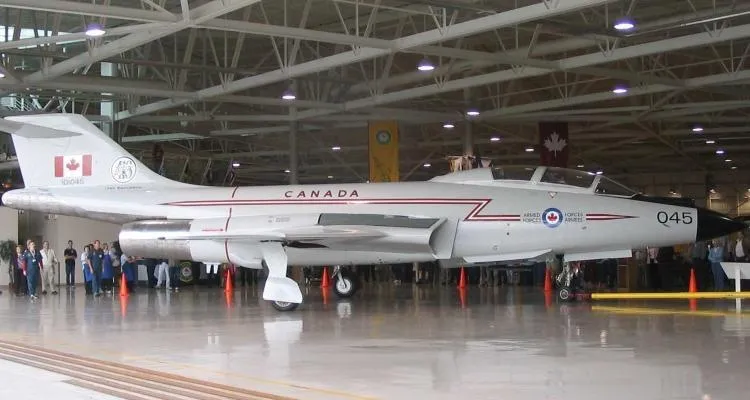
The McDonnell CF-101 Voodoo was an all-weather interceptor fighter operated by the RCAF and the Canadian Forces between 1961 and 1987. They were manufactured by the McDonnell Aircraft Corporation of St. Louis, Missouri for the USAF (as F-101s), and later sold to Canada. Canada purchased F-101s in two batches. The Royal Canadian Air Force purchased 56 F-101B and 10 F-101F aircraft from the United States in 1961. The surviving first batch CF-101s were exchanged in 1970 ââ"�¬â€œ 1972 for 56 lower time USAF F-101B and 10 F-101F aircraft. The second batch of Voodoos served as front line interceptors for the Canadian Armed Forces until the end of 1984. Additionally, one further F-101 (a unique electronic warfare conversion) was leased to Canada from 1982 to 1987.
The Voodoos replaced the obsolete Avro CF-100 Canuck in the RCAF's all-weather fighter squadrons. The Voodoo's primary armament was nuclear AIR-2A Genie unguided air-to-air rockets, and there was significant political controversy in Canada about their adoption. Although they never fired a weapon in wartime, the CF-101 served as Canada's primary means of air defence from Quick Reaction Alert facilities at Canadian airbases. Canadian Voodoo operations finally concluded in April 1987 and on their retirement, they were replaced with McDonnell Douglas CF-118 Hornet fighters. Many examples are preserved in museums and parks in Canada and the USA.
The first deliveries of Voodoos to Canada took place under the designation Operation Queens Row between July of 1961 and May of 1962. The delivery included 25 F-101B-115-MCs and 31 F-10B-120-MCs, all produced in 1959, and ten F-101F two-seat operational trainers, including four F-101F-116-MCs and six F-101F-121-MCs. RCAF CF-101Bs and CF-101Fs were assigned new Canadian serial numbers using the last three digits of their USAF serials prefixed by the number 17. The first 45 CF-101Bs and CF-101Fs entered operational service on 13 Nov 1961 with No. 410 "Cougar" Squadron based at Ottawa, Ontario. Voodoos were flown by No. 409 "Nighthawk" Squadron based at Comox, British Columbia, No. 414 "Black Knight" Squadron based at North Bay, Ontario, No. 416 "Lynx" Squadron based at Chatham, New Brunswick, and No. 425 Squadron "Alouette" Squadron based at Bagotville, Quebec.
In 1970-71, the 46 surviving CF-101Bs and CF-101Fs were exchanged with the USAF for 56 refurbished and modernized F-101B interceptors and ten new F-101F operational trainers under "Operation Peace Wings". These ex-USAF Voodoos were from earlier production batches, but had been upgraded with infrared sensors and improved fire control systems as part of "Project Bold Journey." In Canadian service, this new batch of 66 Voodoos were assigned consecutive serial numbers in the 101001 to 101066 range, with the ten CF-101Fs being given the numbers 101001/101007, 101022, 101024 and 101052. These modernized Voodoos remained in service with Nos. 409, 410, 416, and 425 Squadrons until replaced by McDonnell Douglas CF-188A and CF-188B Hornets in the early 1980s.Harold A Skaarup Web Page
Unit Desciption
416 Sqn Ad Saltum Paratus ("City of Oshawa")
History of the Squadron during World War II (Aircraft: Spitfire Mks. IIA, IIB, VB, VC, IX, IXB, XIVE, XVI)
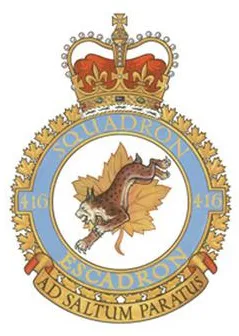
No. 416 Squadron was the 15th RCAF squadron formed overseas in WWII. It was the sixth fighter squadron, and was formed at Peterhead, Scotland  on 22 November 1941. The unit flew Supermarine Spitfire aircraft of various marks as part of the defence of Great Britain, and also undertook offensive operations into Europe. The squadron formed part of the Second Tactical Air Force. After D-Day, the squadron moved to France on June 16, 1944 and thereafter moved with the land forces through France, the Low Countries and Germany, as a fighter and ground attack unit. After the termination of hostilities, the squadron remained in Germany as part of the British Air Forces of Occupation until it was disbanded at Utersen, Germany
on 22 November 1941. The unit flew Supermarine Spitfire aircraft of various marks as part of the defence of Great Britain, and also undertook offensive operations into Europe. The squadron formed part of the Second Tactical Air Force. After D-Day, the squadron moved to France on June 16, 1944 and thereafter moved with the land forces through France, the Low Countries and Germany, as a fighter and ground attack unit. After the termination of hostilities, the squadron remained in Germany as part of the British Air Forces of Occupation until it was disbanded at Utersen, Germany  on 21 March 1946.
on 21 March 1946.
In the course of hostilities, the squadron claimed 75 enemy aircraft destroyed, 3 probables and37 damaged, for the loss of 42 aircraft and 35 pilots, of whom 19 were killed or missing, 13 were POW (1 escapee) and 1 evaded capture. In the ground attack role, the squadron destroyed 286 motor vehicles, 13 locomotives and other miscellaneous targets. Two of the pilots (Flight Lieutenant D.E. Noonan, DFC and Squadron Leader F.H. Boulton, DFC) were aces with at least 5 enemy aircraft shot down. Awards to squadron personnel were 1 Bar to DFC, 11 DFCs, 1 DFM, 1 DFC (USA) and 1 Flying Cross (Netherlands). Battle Honours were: Defence of Britain 1942-44, English Channel and North Sea 1943, Fortress Europe 1942-44, Dieppe, France and Germany 1944-45, Normandy 1944, Arnhem, Rhine.
Maps for Movements of 416 Squadron 1941-46
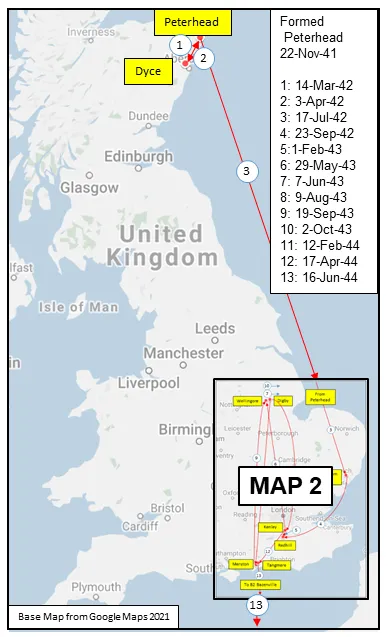
MAP 1: 416 Squadron Movements in Britain 1941-44 (right-click on image to display enlarged in new tab)
|
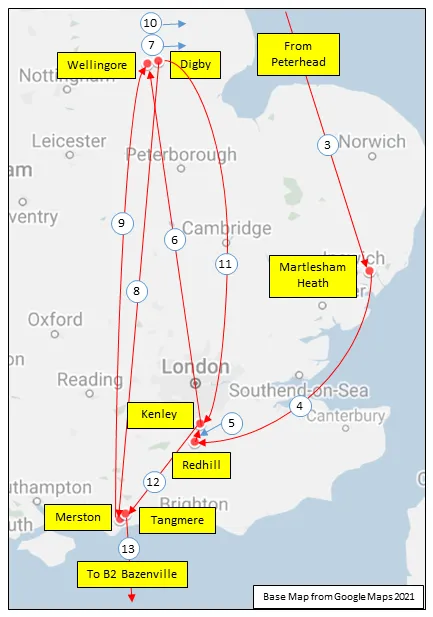
MAP 2: 416 Squadron Movements in Britain: Detail of Map 1
|
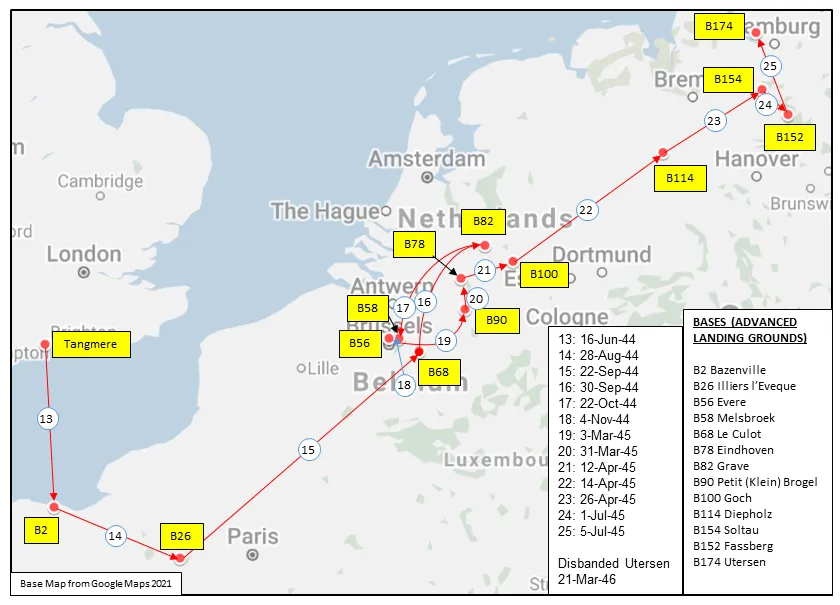
MAP 3: 416 Squadron Movements in Europe 1944-46
|
416 Squadron History Summary 1941-45
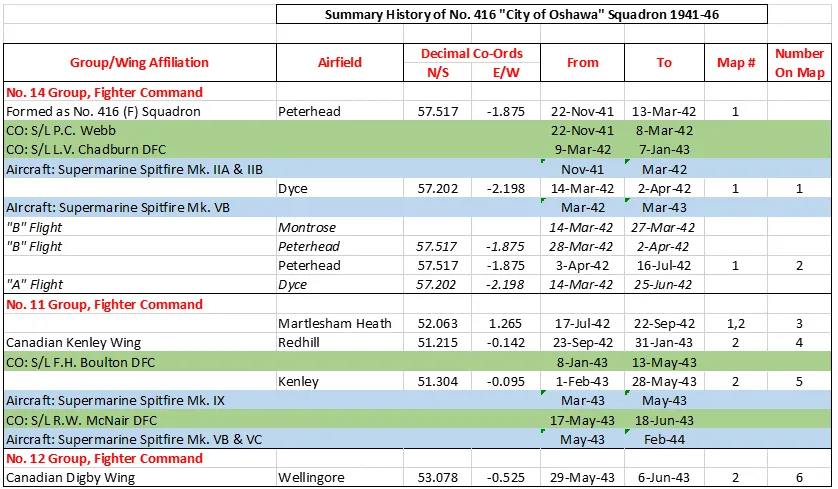
416 Squadron History Summary 1941-45 Page 2
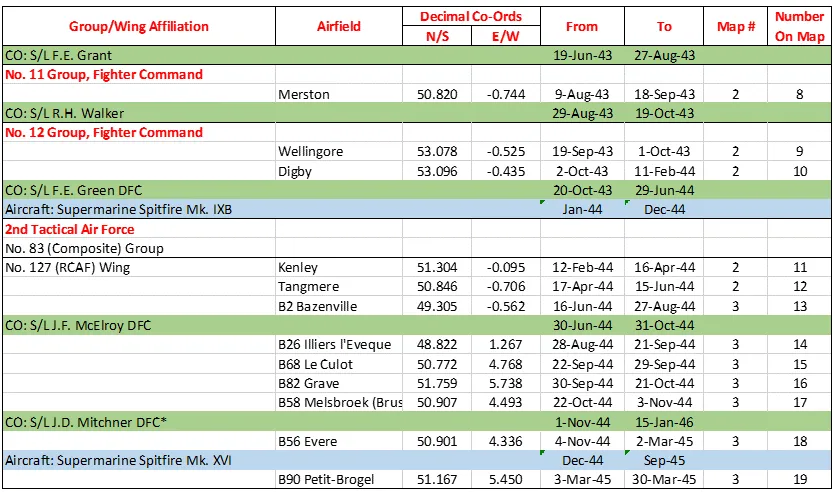
416 Squadron History Summary 1941-45 Page 3

History of the Squadron Post-WWII (Aircraft: Mustang, Sabre Mk 2, 5, 6, Canuck, Voodoo, Hornet)
The squadron was re-formed as a Fighter unit at Uplands, Ontario  on 8 January 1951 with Mustang and, later, Canadair Sabre aircraft of different marks. The squadron joined No. 2 (Fighter) Wing at Grostenquin, France
on 8 January 1951 with Mustang and, later, Canadair Sabre aircraft of different marks. The squadron joined No. 2 (Fighter) Wing at Grostenquin, France  in September 1952. In 1956, it was decided to replace one Sabre squadron in each of No. 1 Air Division Europe’s four wings with an all-weather fighter unit. When No. 423 AW(F) Squadron arrived from Canada, No. 416 was deactivated on 31 January 1957 and reactivated as All-Weather (Fighter) at St Hubert, Quebec
in September 1952. In 1956, it was decided to replace one Sabre squadron in each of No. 1 Air Division Europe’s four wings with an all-weather fighter unit. When No. 423 AW(F) Squadron arrived from Canada, No. 416 was deactivated on 31 January 1957 and reactivated as All-Weather (Fighter) at St Hubert, Quebec  on 1 February, and flew Avro Canada CF-100 (Canuck) aircraft on North American air defence. Pending re-equipment with CF-101 (Voodoo) aircraft, the unit was again deactivated on 1 September 1961. Reactivated at Bagotville, Quebec
on 1 February, and flew Avro Canada CF-100 (Canuck) aircraft on North American air defence. Pending re-equipment with CF-101 (Voodoo) aircraft, the unit was again deactivated on 1 September 1961. Reactivated at Bagotville, Quebec  on 1 January 1962, it subsequently moved to Chatham, New Brunswick
on 1 January 1962, it subsequently moved to Chatham, New Brunswick  in November, where it flew the interceptor until the end of 1984. 416 Squadron thus became the world's last front-line unit flying Voodoos. In 1988 the squadron relocated to CFB Cold Lake as a Tactical Fighter Squadron flying McDonnell-Douglas CF-18s (Hornet), and later merged with 441 Tactical Fighter Squadron to re-form No. 409 Tactical Fighter Squadron in 2006.
in November, where it flew the interceptor until the end of 1984. 416 Squadron thus became the world's last front-line unit flying Voodoos. In 1988 the squadron relocated to CFB Cold Lake as a Tactical Fighter Squadron flying McDonnell-Douglas CF-18s (Hornet), and later merged with 441 Tactical Fighter Squadron to re-form No. 409 Tactical Fighter Squadron in 2006.